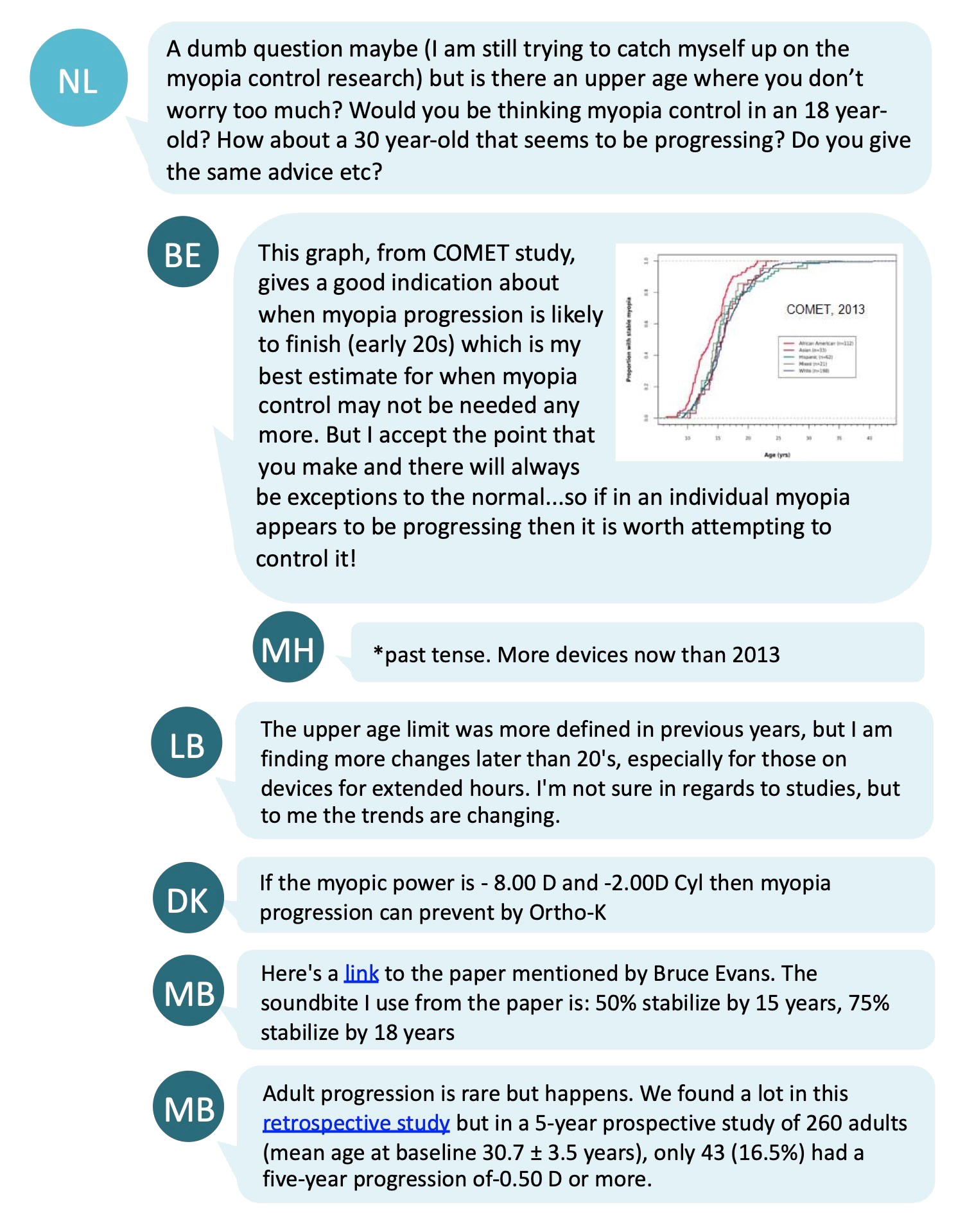The question on the upper age for commencing myopia management, and when to cease myopia management, was raised in this post. The links referenced in the post are discussed below.

What the research shows
COMET study - reported results from the overall study cohort
- 48% had stable myopia by age 15 years;
- 77% by age 18 years;
- 90% by age 21 years;
- By age 24 years, the curves of almost all of the participants, 96% had achieved the curve-based definition of myopia stabilization.
A retrospective study of myopia progression in adult contact lens wearers - (Bullimore et al 2002)
- Showed that the frequency of myopia progression decreases with age, being common in their 20s but less frequent in their 30s
- Over 5 years of study, 21.3% of the participants show myopia progression of at least 1D
- There were no differences in risk factors between those who progressed in adulthood and those who didn't - hours per day spent reading and writing, computer use, education level, family history of myopia, age of onset of myopia, and contact lens wear were similar.
Take home messages
- The above studies show that myopia can progress slowly and steadily during adulthood for a small portion of the population.
- While half of myopes will stabilize by age 16, this means that half don't! Myopia management should continue until myopia stabilization is demonstrated, at which point you could consider discontinuing the myopia control treatment and reviewing again in 6 months. Young adult myopes wearing contact lens treatments may be happy enough to continue them even once myopia is stable.
- Continue to emphasise the importance of visual hygiene to our adult patients. Heavy near work can promote myopia progression, even in young adults.
- Regardless of the age of myopia stabilization, we need to take special care of higher myopes, especially those with axial length over 26mm or more than 5-6D of myopia as they have a high risk for macular and retinal disease. In these patients, we should consistently monitor their eye health throughout adulthood.

About Connie
Connie Gan is a clinical optometrist from Kedah, Malaysia, who provides comprehensive vision care for children and runs the myopia management service in her clinical practice.

About Kimberley
Kimberley Ngu is a clinical optometrist from Perth, Australia, with experience in patient education programs, having practiced in both Australia and Singapore.











